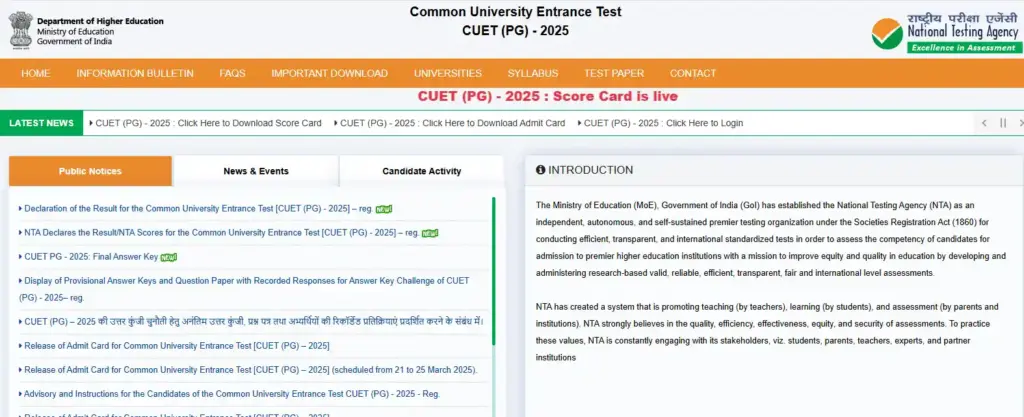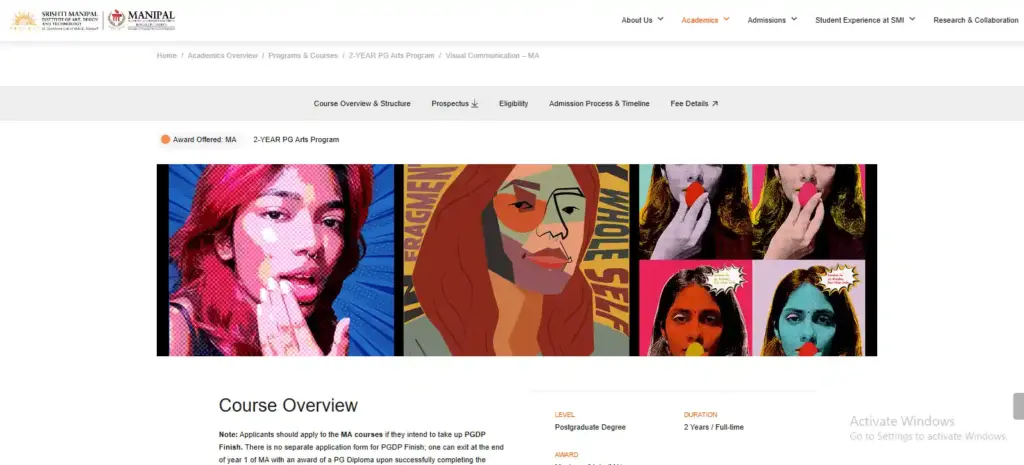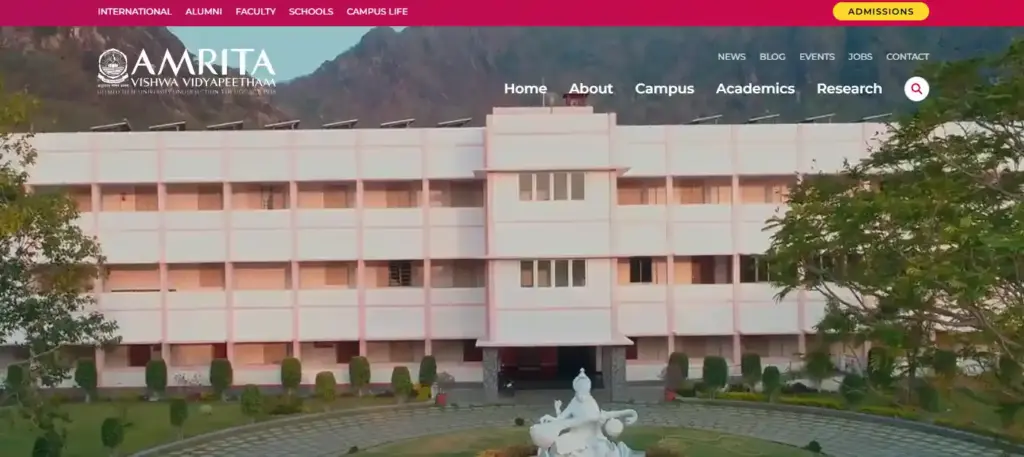Ma in Visual Communication Course: Master of Arts in Visual Communication, this is a 2 -year postgraduate degree course. This course is made for those students who Graphic Design, Digital Media, Advertisement, Video Production And Visual storytelling Like interested in creative areas.
In this course, you are also taught skills such as designing tools, animations, branding, video editing and digital content creations along with the subjects of visual communication. Also, you are given special characteristics in essential things like media planning, creative thinking and content presentation, so that you are fully prepared for the industry.

If you want to make your name in the field of graphics, media, digital arts or branding, then Ma in Visual Communication Course can be a practical and future-ray option for you.
Course overview
Parameter | Course details |
|---|---|
Course Name | Ma in Visual Communication |
Course Level | Postgraduate |
Course Duration | 2 years (4 semesters) |
Minimum eligibility | Bachelor’s Degree (Any Stream, Preferably in Arts, Design, Or Media) |
Minimum marks required | Minimum 50% marks (45% for reserved categories in some universities) |
Admission process | Merit-Based / Entrance Exam-Based (EG, Cuet Pg) |
Age limit | No age limit (minimum 20 years in some universities) |
Main subjects | Graphic Design, Digital Media, Animation, Photography, Visual Storytelling, Advertising |
Average Course Fees | Government College: ₹ 5,000 – ₹ 50,000 per year |
Average starting salary | ₹ 3.5 LPA – ₹ 10 LPA |
Top job profiles | Graphic Designer, Art Director, Visual Content Creator, Animator, Media Producer |
Also read…
Eligibility Criteria
You must have a bachelor’s degree for admission in this course. Bachelor’s degree is from any stream (BA, BCom, BSC, BFA, etc.) or in any related field of visual communication. In most universities, the minimum marks in graduation should be up to 50%, although some universities also have up to 45% marks. Especially for the reserved category, all universities hold less marks. Many universities conduct entrance examinations, such as Ceed, NID Entrance, or Cuet PG etc. And some universities also give admission on merit basis.

Admission Process
Admission in this course is mainly in two ways in a merit-based (Merit-Base) in which students are selected on the basis of degree marks. And second entrance exam-based. For admission to major universities of India, national level or university-level examinations like CUET PG have to be performed.
Step-by-step procedure for admission:
- Fill the application form: Find out in your college whether the admission is being done on the basis of merit or on the basis of entrance examination. Then fill the application form accordingly.
- Entrance Exam: If the entrance examination is necessary for admission, then join Cuet PG or college-level examinations.
- Document verification: After being selected in the merit list or entrance examination, your document (entrance exam scorecard, age proof, residence proof and 12th marksheet, graduate marksheet) will be tested.
- Fee deposit: After that fees will have to be deposited in the college. In some universities, fees are also exempted for SC/ST/OBC category.
- Application check: In some colleges, the application form is also checked by the course coordinator and after checking the coordinator signs it to confirm the admission.
- Entry Complete: After all procedures, submit the form and fees to the university’s entry office. After this your entry will be completed.
Fees Structure: Government and Private Universities
The fees of this course are different in every college and university university. The fees in government colleges and universities ranges from 5,000 to 50,000 per year. The same fees in private colleges and universities range from 50,000 to 3,00,000.
College type | Annual fees |
|---|---|
Government Colleges/Universities | ₹ 5,000 – ₹ 50,000 per year |
Private Colleges/Universities | ₹ 50,000 – ₹ 4,00,000 per year (with distance mode) |
Many universities offer scholarships or fees exemption for SC/ST/OBC and economically weaker sections. For this, read the university prospectus carefully.
Course Duration and Pattern
The duration of this course is usually 2 years, which the university has an annual system (system) and a university has a semester system. Which is divided into 4 semesters. 4-6 subjects are taught in each semester. Some universities, especially under NEP 2020, may include a research project or thesis in the MA course, which is mandatory in the final year. Some institutes also include practical projects, such as short films or design portfolio.

Subject selection
Core subjects: In this course, you get a chance to specialize in major subjects like graphic design, digital media, visual storytelling, animation, and photography.
Elective subjects: You can choose an alternative subject based on your interest, such as advertising, web design, user interface (UI/UX) design, or motion graphics.
Skill-based course: Many universities offer skill-based courses, such as digital marketing, video editing, or 3D animation.
Popular Specializations: Ma in Visual Communication is available in specializations such as Visual Media, Graphic Design, Animation, and Advertising.
Internship Opportunities
Internship in this course may be mandatory in the third or fourth semester. Major Internship Area:
Media and Advertisement: Working as a graphic designer or content creator in advertising agencies or digital marketing firms.
Film and TV Production: Internship in video production, animation, or post-production.
design Studio: The opportunity to work on UI/UX design, motion graphics, or branding projects.
Ma in Visual Communication Regular and Distance Learning: Which one is better?
You can do this course in two ways, either you go regularly to college or some universities that also provide distance learning like such as
Solent University, UKWhich provides the distance learning facility of this course.
If you are completely healthy and can go to college, do MA Visual Communication Course regularly. Along with studies in college, you get a chance to participate in other activities, which helps in your personality development. Also, you can learn rapidly with face-to-face interaction. Distance Learning is suitable for those who want to study with a job.
Career Options and Higher Studies after Ma in Visual Communication
After completing the MA in Visual Communication course, you have many career options available. You can get opportunities in the following job profiles based on your expertise, skill, and experience:
Job Role | Primary Duties | Average Salary (INR) |
|---|---|---|
Graphic designer | Creating Logos, Advertisements, and Branding Materials for Print and Digital Media | ₹ 3.5 LPA – ₹ 8 LPA |
Art Director | Leading Design Teams, Conceptualizing Visual Campaigns for Films, Ads, Or Magazines | ₹ 6 LPA – ₹ 15 LPA |
UI/UX Designer | Designing user-friendly interfaces for websites and apps | ₹ 4 LPA – ₹ 12 LPA |
Animator | Creating Animations for Films, Games, or Advertisements | ₹ 3.5 LPA – ₹ 10 LPA |
Visual content creator | Developing Engaging Visual content for social media and digital platforms | ₹ 3 LPA – ₹ 7 LPA |
Multimedia producer | Overseeing multimedia projects, including video production and editing | ₹ 4 LPA – ₹ 12 LPA |
Creative Director | Managing Creative Strategies for Brands and Campaigns | ₹ 10 LPA – ₹ 25 LPA |
Instructional Designer | Designing educational content and training materials with visual elements | ₹ 4 LPA – ₹ 9 LPA |
Higher Studies after Ma in Visual Communication
If you want to further your education, then after Ma in Visual Communication, the following courses can give a new direction to your career:
Course Name | Description |
|---|---|
Phd in Visual Communication | Research-Oriented Program Focusing on Visual Media, Design theory, or Media Studies |
Mphil in media studies | Advanced Study in Media and Communication Research |
MFA (Master of Fine Arts) | Specialization in Visual Arts, Animation, or Graphic Design |
MBA in Marketing | Combines Visual Communication Skills with Business and Marketing Strategies |
Certificate in Motion Graphics | Short-Term Course for Advanced Motion Design and Animation |
Diploma in UI/UX Design | Focuses on User Interface and Experience Design For Digital Platforms |
Certificate in Data Visualization | Enhances Skills in Creating Visual Representations of Data |
Diploma in Film and Video Production | Focuses on Filmmaking and Post-Production Techniques |
Also read…
Ma in Visual Communication College in India
This course is available in very few colleges of India, but you can do this course in distance learning from Global University such as:

Ma in Visual Communication: General Question (FAQ)
What is the eligibility for this course?
Minimum 50% marks with a bachelor’s degree (BA, BCom, BSC, BFA, etc.) from any stream (45% acceptable in some universities). In many institutions, entrance examinations like CEED, NID Entrance, or Cuet PG have to be given.
What are the career options after this course?
You can work as a graphic designer, art director, visual content creator, animator, or media producer. In addition, you can opt for freelancing, digital marketing, or higher education (PhD).
What is the course fee?
The fees in government colleges can range from ₹ 5,000 to ₹ 50,000 per year and in private colleges from ₹ 50,000 to ₹ 3,00,000 per year. Scholarship is available for SC/ST/OBC.
Biharhelp App
Important information for your bright future is available here – government jobs, exam results, admit cards and educational opportunities. Download the BIHARHELP app for the latest updates and necessary information – your success companion.
















